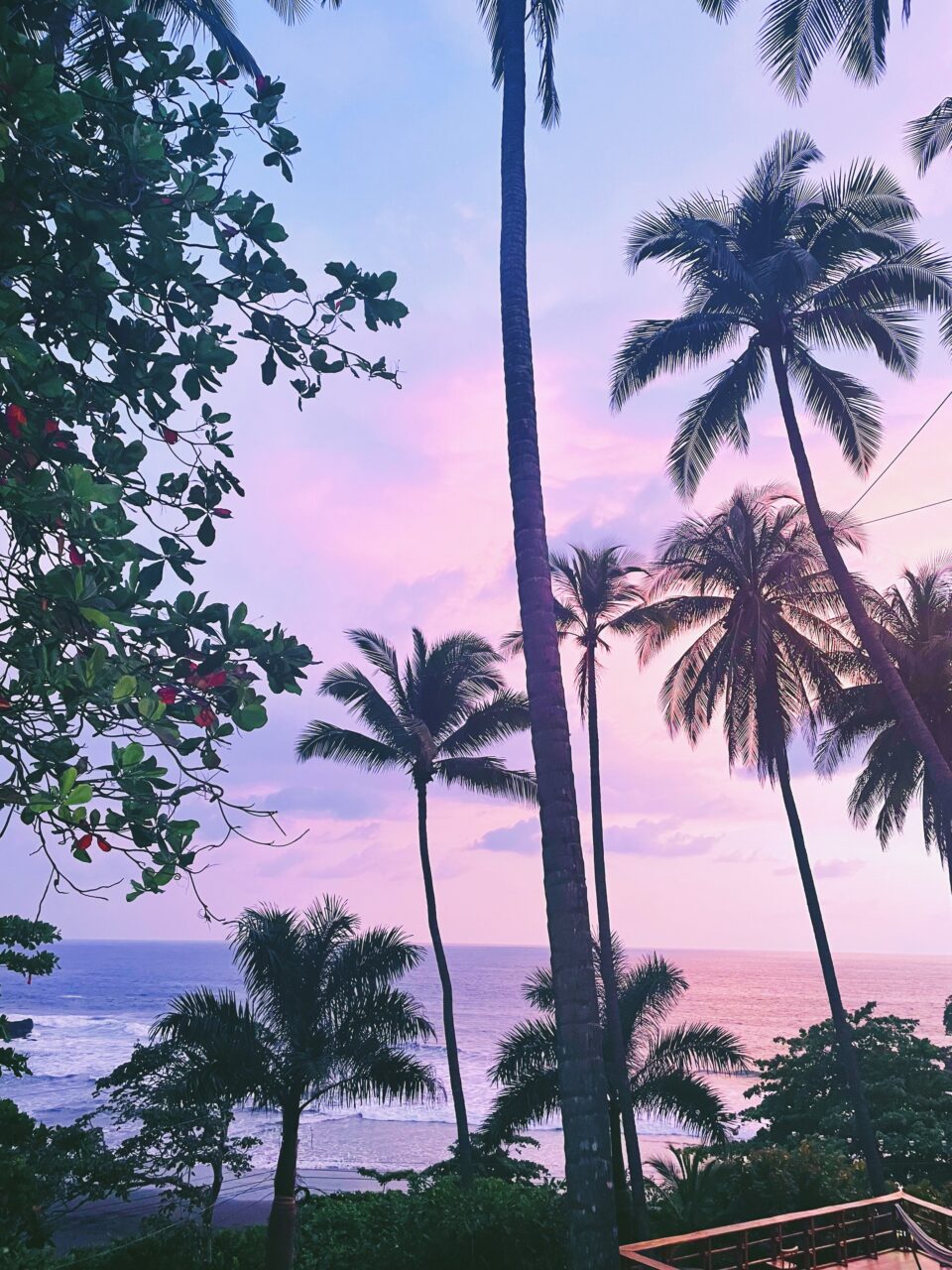The opportunity for great adventure has a way of presenting itself when I need it the most. Riding the crest of early maturity at twenty, alarmed by the prospect of my changing identity and muddling through a slowly-failing young love, I escaped for a year to the thick of Tuscany. I was washed by cold Italian rain, strengthened with long walks through the ancient streets, sustained with hearty spaghetti alla carbonara, and cheered by a new ability to speak the local dialect. I owe much to Florence, not least of all the courage to begin calling myself an artist.
Six years later, on the eve of a new chapter in adulthood, the siren song of travel echoed in my ears again. This time its refrain led me to backpacking in South America, but it would be different from any trip I had tackled before: it would be the longest time I’d ever been constantly backpacking, and I was doing it with my boyfriend of six years.
He and I had been dreaming of a move to California for several years, and with his employment contract up for renewal in the fall of 2015, it looked like the timing was finally right. As we talked about our plans for the future, we waffled between wanting to jump right into a new life on the other coast and doing something really big in-between the two. Should we teach English in South Korea? Volunteer on a farm in Europe? On Valentine’s Day, at his suggestion, I looked for three plane tickets under a thousand dollars, and I found them: one to Bangkok, one to Rio de Janeiro, and one to Madrid. He speaks Spanish, I speak Italian, and neither of us had even been to South America, and so the decision made itself.
Our route ended up being based two things: a plan to hike Machu Picchu for four days in November, and the cheap flights we found around the continent.
The Route:
We spent a month in Brazil, flew to Peru, took buses south to Cusco, hiked Machu Picchu, took more buses south to Bolivia, flew to Chile, and took buses across the continent to Buenos Aires, where our return flight headed back to DC.
The Budget:
$6,000 per person
The Timeline:
End of September to Middle of December
Method of Communication:
We relied 100% on wifi when we travel, and it generally worked out. Google does this cool thing where if you save a location you’ve searched for when you’re online, it’ll store the bookmark and the entire map around it for when you’re offline so you can still use your phone to navigate without using data!
Most Useful App
TripIt stores all of the info from plane tickets, hostels, and travel information in one place for use off-line.
Packing List
145 cubic liters of clothes
two bathing suits
six pairs of shoes
two iPhones
a Kindle
an old iPad
two passports
two yellow fever certificates
a jar of peanut butter
enough Immodium to stop up an elephant
a sketchbook
a couple of Xanax
What made it to South America?
Everything except the peanut butter (who knew it counted as a liquid?)
The Experience

A view of Cristo Redentor, Rio de Janiero, Brazil
Brazil
We spent the first month backpacking the humid coast of Brazil, where we were both thoroughly seduced by Rio de Janeiro and the idyllic islands to its south. We spent a week marooned on a pedestrian-only island off the coast with another couple we had made friends with at a hostel. It threatened rain almost every day, and we walked miles on trails to hidden beaches with exotic names. In between hikes, we drank caipirinhas (Brazil’s national cocktail, a heady mix of sugar cane liquor called cachaça, limes, and sugar) on a floating bar, played cards on the sand in the rain, and attempted an ill-fated mountain bike ride through the jungle.
In- country transportation: Brazil is super modern, and they have amazing long-haul buses that are pretty cheap and a good way to get around.

Conquering Machu Picchu (day three), Sacred Valley, Cusco, Peru
Peru
Peru was everything Brazil was not. The Peruvians wear warm, wide smiles and speak beautiful Spanish. My boyfriend’s friend joined us for this leg, and as we traced the outline of the coast we ate as much delicious ceviche as our stomachs could handle.
Hiking Machu Picchu was one of the most mentally challenging feats I have accomplished yet. Over four days, we made new friends, walked with loaded backpacks for 26 miles in blinding sun and soaking rain, up slippery Inca stone steps and over mountain passes, and finally arrived at misty Machu Picchu. Between rock climbing, food poisoning, hiking, white water rafting, horse riding, and guinea pig eating, Peru was a wild ride.
Bolivia
Bolivia’s diamond-in-the-rough La Paz was an unexpected jewel. The boys mountain-biked the infamous Road of Death, a treacherously thin and winding road originally constructed by Paraguayan slaves and from which many a hapless tourist and driver has toppled to their death. I was bowled over by the vivid colors and deep superstitious beliefs of a country that boasts the biggest indigenous population in the continent: Bolivia is what South America might have looked like without the whitewash of European influence.
In-country transportation:
Buses. In Peru and Bolivia, we had heard nightmarish stories about the local buses – bus drivers being drunk and driving tired, buses falling apart, people getting carsick all over the place – so we sprung for nicer companies where we could. After some debating, we decided to take a bus service called PeruHop from Lima south towards Arequipa and Cusco. It’s a company started by a couple of Irish guys, and it mostly caters to gringos and foreigners. The upside was that they handle everything from the route, to the transport and hostels (with discounts included). There are special things you get to see too, but it was kind of annoying being with a bunch of foreign tourists on a huge bus.
Taxis. I wouldn’t recommend negotiating on bus tickets, but for taxis in Peru and Bolivia it’s an absolute must because there’s no official meters or really official taxis! It helps to have a Spanish-speaker for that part.

Cheering the new president, Buenos Aires, Argentina
Chile & Argentina
Chile and Argentina seemed worlds apart from the rest of the countries we visited, if only for the confusing accents and speed with which the locals spoke Spanish. Santiago, especially, captured our hearts and imaginations. Wide, verdant parks cut the city into smaller chunks, and swirling murals punctuated each new block. The streets smelled of baking bread, not sewage like the rest of the continent somehow. Oh Santiago, where red wine ran like water: we never stood a chance. Our weeks in Argentina were peppered with asados (parties where endless, lusciously grilled meats were washed down with local Malbec wine), plenty of wine tasting, bungee jumping in Mendoza, and live music in Buenos Aires.
In-country transportation: Argentina had great buses that were really expensive (especially compared to Brazil’s system, they were probably on par with Greyhound prices in the US).
Trip Reflection
The experienced traveler knows that any adventure is formed half from vanity and half from serendipity. The real journey, though, is not the one that is marked by passport stamps. Those stamps mark something much less tangible — a twisting path that knocks down our mental and physical limits, illuminates our inherited blindnesses, and reveals a new inner world that no one has colonized yet.

On top of favela Vidigal in Rio de Janiero, Brazil
For more of Claire’s lovely photos and further information on her South America trip check out her blog, South of North West of East and follow her on IG @hiclaireharper






